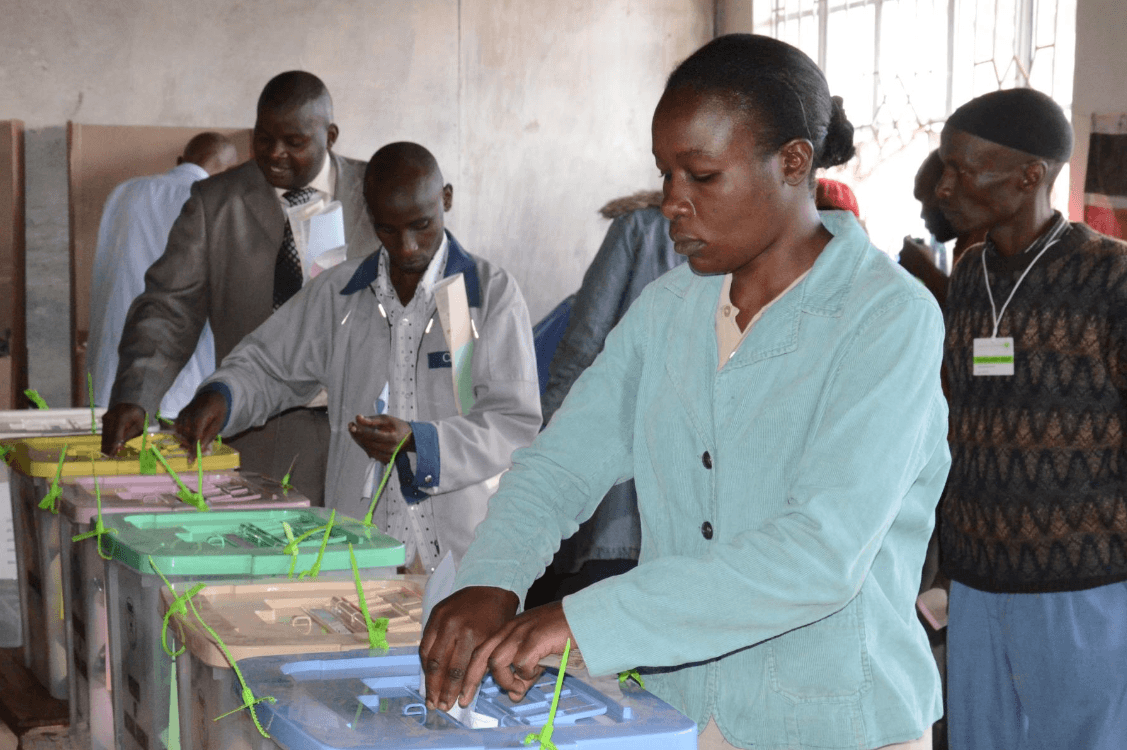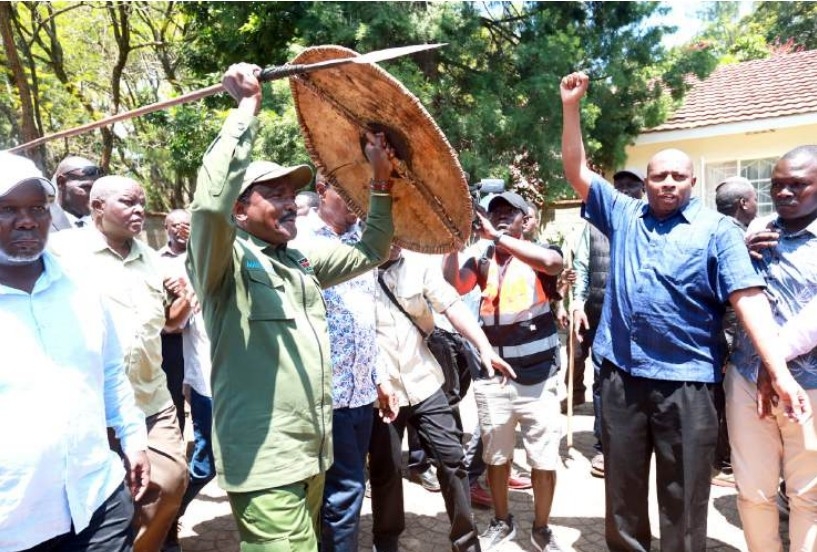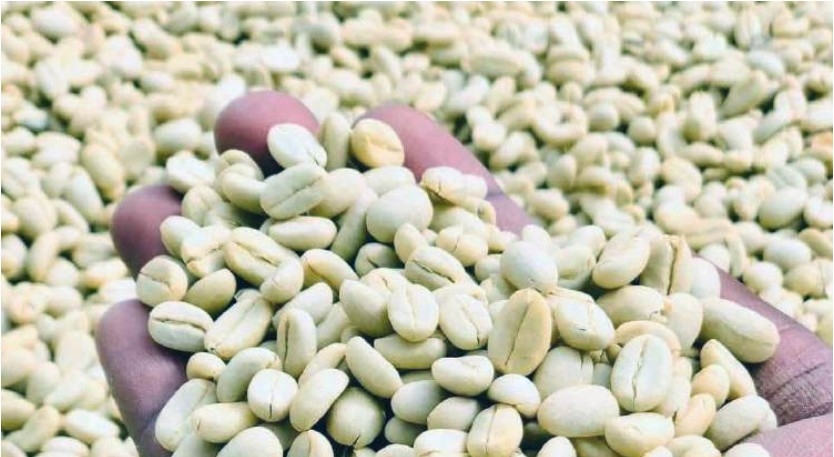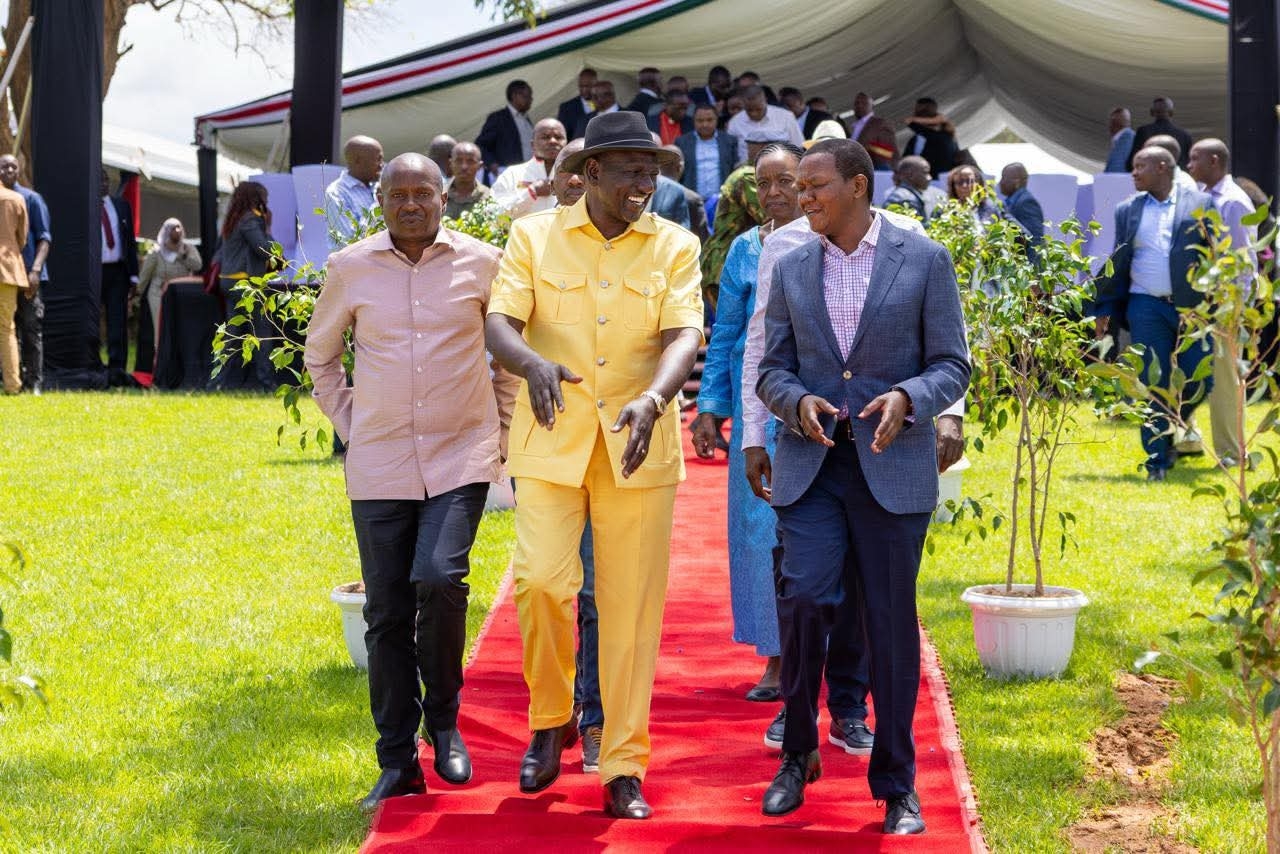
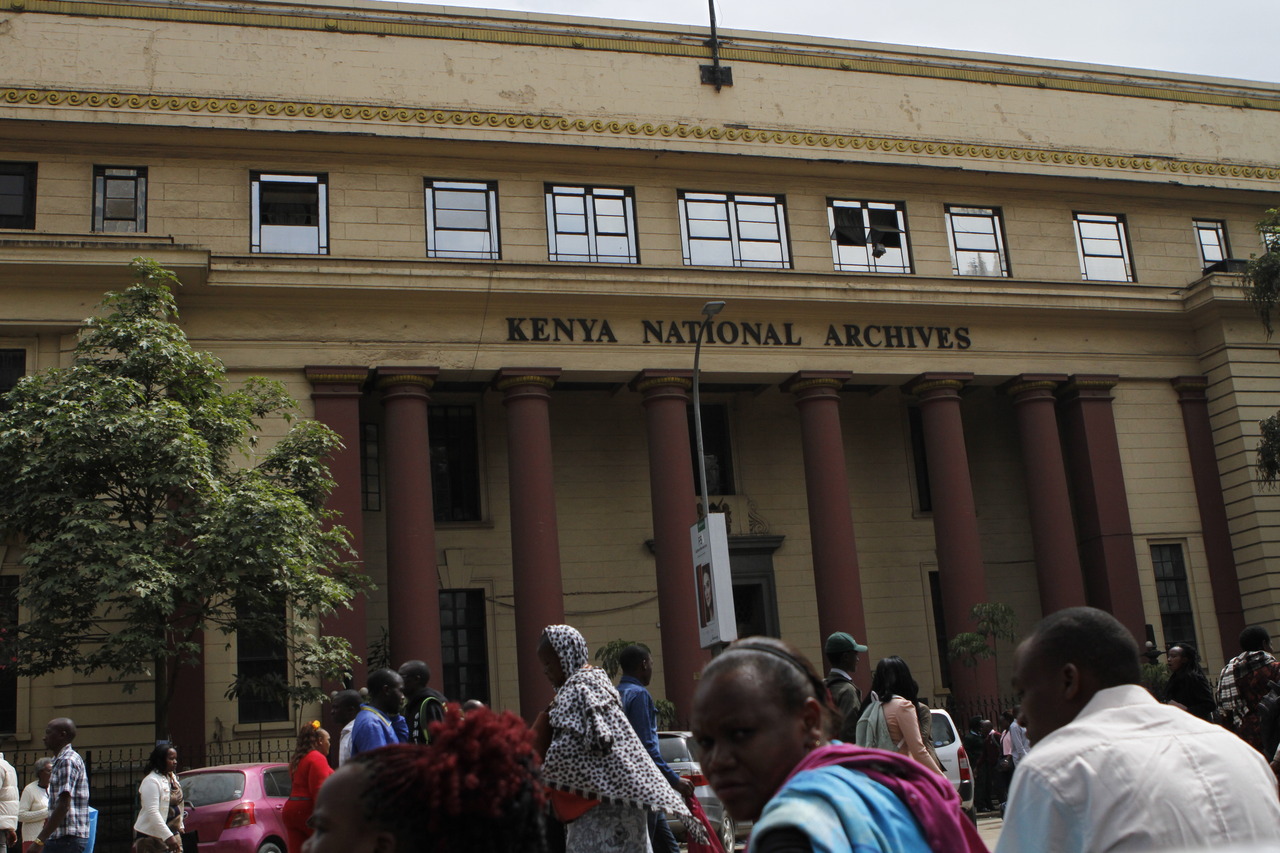
Situated at the intersection of Moi Avenue and the Ambassador Hotel in Nairobi, the beige and brown massive square building is itself an oft-ignored granary of our nationhood.
Powerful Victorian stonework, once the facade of colonial power, now shelters the stories of our nation emerging from the shadows of empire in ever-widening gyres. Inside, the air holds the weight of history. This is your history and mine spiraling ever forward, expanding and contracting with the pulse of time.
At the heart of this archive, one new object will soon be added: the black flywhisk of a newly dead national leader. Not merely an instrument for rallying thousands of opposition supporters from county to county across the land, this famous whisk is a relic imbued with profound meaning. It is to me a symbol of power and ancestral wonder.
I see its familiar threads dark and fragile, made from ritual oxen tails, quivering with a shiny black, typical of the skin of people from the edges of the lake Kenya shares with Uganda and Tanzania like a symbol of their common yet strained destiny.
When that future day arrives, when the whisk will be placed on the first floor of the Archives, it shall take its place among the echoes of our luminous post-independence political leaders. The spiral of time unfolds in a quiet corner of the gallery, as the whisk moves from its ceremonial past to its current role as an artifact of opposition politics and resistance aesthetics.
I see it now as a creature caught between the mourning of the past and the hope for what lies ahead. For eons to come, it’s very presence in this sanctuary of kumbukumbu will invite contemplation.
Our journey through the Archives begins on the overcast October avenue named after the second President of Kenya here in the heart of Nairobi. Standing as part of the crowds surrounding the Gor Mahia-themed Tom Mboya statue, one feels the peasant and worker pulse of our main city.
The statue, a man in stone now a youth icon and emblem of post-colonial hope, points towards the Kenya National Archives as if it is our symbol of continuity. The new whisk whose owner has died recently, I choose to see as part of this continuum, a moment in the long unfolding of history.
As we approach the Archives, the square and very high building looms, each of its building stones a reminder of the weight of the old empire now shrunk into the busy role of our donor and investor namba moja.
The irony is tangible. The stone house of an imperial legacy now houses pre-colonial art and post-colonial endeavour. Murumbi Gallery, named after our second Vice President and a passionate collector of indigenous artefacts, welcomes you from the massive mahogany doors. Behold, objects from various black nations, sculptures, weapons, masks and witchcraft paraphernalia percolate your wondrous eyes.
The journey continues up the wide stairs to the upper levels of the coffin of a building. Portraits of now forgotten national heroes gaze down in solemn silence.
These figures, frozen in time, are monuments to the sacrifices made for our independence. Their faces are larger than life, visages cast in mythology and nostalgia. Gone are the years their art eyes shone with patriotism. Nowadays, with each visit, I sense a hollowness in their eyes. The dreams of independence, once filled with optimism and hope, lie now on the grounds of the main house in Nairobi, half expressed.
Each step further into the gallery is a step back into history. Photographs, documents and artefacts trace our evolving political landscape. Early moments of independence shimmer with idealism, but this glow is gradually eroded by the pressures of nation building, corruption and the aftermath of a youthful generation with eroded Africanity.
As the old whisk settles into its new resting place, it takes on a larger significance. It is no longer simply a tool once owned by the president of the people. I believe, for me and any perspicacious visitor of the future, it will be an invitation to look forward and inward.
Time is not linear. It spirals, bringing moments of clarity and confusion, hope and despair, death and rebirth. The whisk has come a long way from Maseno to Germany to Bondo to Nairobi to elsewhere, then finally to India, and now it is here.
The gallery where it shall now rest in peace forever will continue its hums with the tic-toc rhythm of clock hands. This black whisk will mourn what has been lost, including its owner. Similarly, it will also carry the seeds of redemption.
I see it being seen by thousands in years to come as a gesture of something still unfolding, just like the stoney vision in the eyes of the statue of Thomas Mboya, a life cut short in the womb of a young black state.
As you and I leave the gallery, of the about-to-be-relocated Kenya National Archives, the spiral of time will continue to turn and turn in ever widening gyres, like a falcon that no longer hears the say of the falconer.
You will see with each turn of the spiral of time that each object within the Archives carries the weight of time and memory. Yet you will nod in tandem with others that none does so as profoundly as the new black whisk in this old building of national importance.
As it rests in the gallery not far from the first state chair of the earlier Prime Minister of Kenya, it shall no longer be just a relic of the struggles of our second liberation. It shall be a physical solid libation to an unsung father of the nation, whose death took away with him a part of the living breath of our motherland itself.









